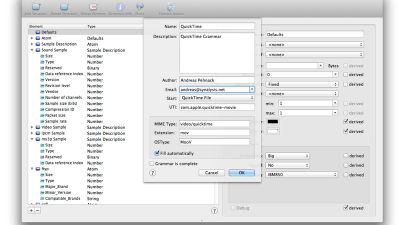

- #Synalyze it find structure install
- #Synalyze it find structure archive
- #Synalyze it find structure password
Payload/.app/Assets.car Another zipped archive that contains assets (icons)

Payload/.app/_CodeSignature/ Contains a plist file with a signature over all files in the bundle Payload/.app/ist A file that contains some of the application specific configurations ipa file contents ← Apple FairPlay DRM Encrypted Executable ipa extension can be uncompressed by changing the extension to. In those cases, the DeveloperDiskImage.dmg included in the iOS SDK is mounted onto the device.Īpplications ipa file (iOS App Store Package)įiles with the. Developer is populated only if the i-Device is selected as “Use for development” from within XCode. There is no /Volumes (and no need for it, or for disk arbitration, as iOS doesn’t have any way to add more storage to a given system) There is no /Users, but a /User - which is a symbolic link to /var/mobile This is a feature of the jailbreak, not of iOS. Applications may be a symbolic link to /var/stash/Applications. Unlike OS X kernel caches (which are compressed images), iOS kernel caches are encrypted Img3.

The kernel is already prepackaged with its kernel extensions, as a kernelcache (in /System/Library/Caches/). The file system is also encrypted in part. The file system (HFSX) is case-sensitive (unlike OS X’s HFS+, which is case preserving, yet insensitive). Core dumps are created when a process crashes, if the ulimit(1) command allows it, and contain the core virtual memory image of the process.įrom the file system perspective, iOS is very similar to OS X, with the following differences: Cores: Directory for core dumps, if enabled. Volumes: Mount point for removable media and network file systems. Every user has his or her own directory created here. It contains only a Library subdirectory, but this directory holds virtually every major component of the system, such as frameworks (/System/ Library/Frameworks), kernel modules (/System/Library/Extensions), fonts, and so on. Network: Virtual directory for neighbor node discovery and access. Library: Data files, help, documentation, and so on for system applications. Developer: If XCode is installed, the default installation point for all developer tools. Applications: Default base for all applications in system. OS X adds its own special directories to the UNIX tree, under the system root: In OS X, this is a symbolic link to /private/var. A directory for log files, mail store, print spool, and other data. In OS X, this is a symbolic link to /private/tmp. The only directory in the system that is world-writable (permissions: rwxrwxrwx). These are special files that represent hardware devices on the system (character and block devices). In OS X, this is a symbolic link to /private/etc.
#Synalyze it find structure password
A directory containing most of the system configuration files for example, the password file (/etc/passwd). This directory also contains the include/ subdirectory, where all the standard C headers are. usr/lib is used for shared objects (think, Windows DLLs and \windows\system32).
#Synalyze it find structure install
This is not meant for users, but is more like Windows’ program files in that third-party software can install here. These are binaries used for system administration, such as file-system management, network configuration, and so on.

This is where the common UNIX commands (for example, ls, rm, mv, df) are IOS platform overview File System UNIX system directoriesĪs a conformant UNIX system, OS X works with the well-known directories that are standard on all UNIX flavors: Application security features, Apple FairPlay DRM


 0 kommentar(er)
0 kommentar(er)
